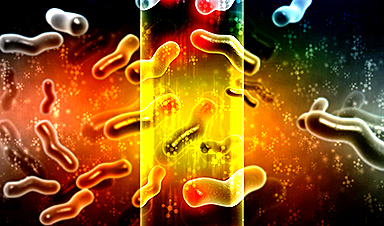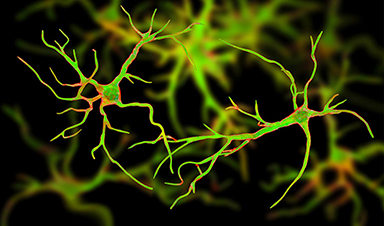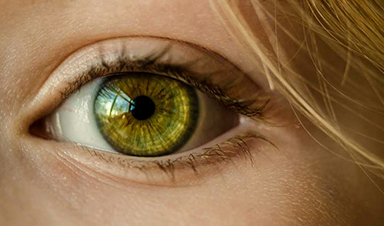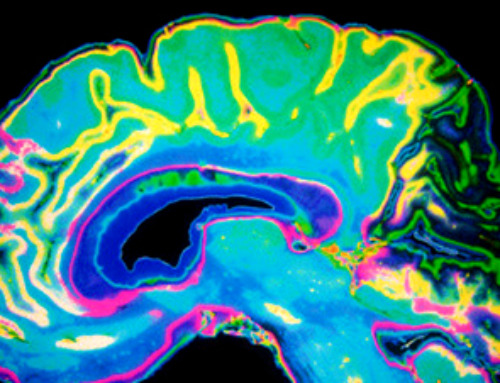Researchers from the Netherlands Institute for Neuroscience found that the superior colliculus, a brain region preserved throughout evolution, plays a more vital role in vision than previously believed.
When we look at something, we can easily distinguish an object from the background. While this sounds obvious, how our brain accomplishes it is still quite complicated. It has long been known that a brain area called the visual cortex is involved in the process. Yet there are animals in which this area is much less developed than ours or does not exist at all. So how do these animals see when a prey or predator approaches them in a crowded background? Could another player be involved after all?
Visual information travels from our retina to the visual cortex, but also partly to a structure called the superior colliculus. This is the ancient visual system common to all classes of vertebrates, from fish to amphibians, reptiles, birds, and mammals. Remarkably, this structure has been preserved throughout evolution, but varies greatly in relative size between different organisms. For example, the superior colliculus is relatively large in fish and birds whereas it is just a tiny pea tucked away in grey matter in humans.
Two parallel paths
To find out exactly what the superior colliculus does, Leonie Cazemier and her colleagues from Alexander Heimel's and Pieter Roelfsema's groups studied mice and their ability to distinguish objects from the background. The mouse is an interesting model because, like in humans, its brain has two parallel pathways: both the visual cortex and the superior colliculus. The mice were trained to distinguish figures from a background, which appeared on the left or right side of the image. By licking either left or right, the mice reported on which side the image had appeared.
Alexander Heimel: "Previous research already showed that a mouse can still complete the task if you turn off its visual cortex, which suggests that there is a parallel pathway for visual object detection. In this study, we switched off the superior colliculus using optogenetics to see what effect that would have. Contrary to the previous study, the mice became worse at detecting the object, indicating that the superior colliculus plays an important role during this process. Our measurements also showed that information about the visual task is present in the superior colliculus, and that this information is less present the moment a mouse makes a mistake. So, its performance in the task correlates with what we're measuring."
Function in humans
"How this works in humans is not entirely clear yet. Although humans also have two parallel systems, their visual cortex is much more developed. The superior colliculus may therefore play a less important role in humans. It is known that the moment someone starts waving, the superior colliculus directs your gaze there. It is also striking that those who are blind with a double lesion in the visual cortex do not see anything consciously but can often still navigate and avoid objects. Our research shows that the superior colliculus might be responsible for this and may therefore be doing more than we thought."
Reference: "Involvement of superior colliculus in complex figure detection of mice" by J Leonie Cazemier, Robin Haak, TK Loan Tran, Ann TY Hsu, Medina Husic, Brandon D Peri, Lisa Kirchberger, Matthew W Self, Pieter Roelfsema and J Alexander Heimel, 25 January 2024, eLife.
DOI: doi:10.7554/eLife.83708
News
Gold Nanoclusters Could Supercharge Quantum Computers
Researchers found that gold “super atoms” can behave like the atoms in top-tier quantum systems—only far easier to scale. These tiny clusters can be customized at the molecular level, offering a powerful, tunable foundation [...]
A single shot of HPV vaccine may be enough to fight cervical cancer, study finds
WASHINGTON -- A single HPV vaccination appears just as effective as two doses at preventing the viral infection that causes cervical cancer, researchers reported Wednesday. HPV, or human papillomavirus, is very common and spread [...]
New technique overcomes technological barrier in 3D brain imaging
Scientists at the Swiss Light Source SLS have succeeded in mapping a piece of brain tissue in 3D at unprecedented resolution using X-rays, non-destructively. The breakthrough overcomes a long-standing technological barrier that had limited [...]
Scientists Uncover Hidden Blood Pattern in Long COVID
Researchers found persistent microclot and NET structures in Long COVID blood that may explain long-lasting symptoms. Researchers examining Long COVID have identified a structural connection between circulating microclots and neutrophil extracellular traps (NETs). The [...]
This Cellular Trick Helps Cancer Spread, but Could Also Stop It
Groups of normal cbiells can sense far into their surroundings, helping explain cancer cell migration. Understanding this ability could lead to new ways to limit tumor spread. The tale of the princess and the [...]
New mRNA therapy targets drug-resistant pneumonia
Bacteria that multiply on surfaces are a major headache in health care when they gain a foothold on, for example, implants or in catheters. Researchers at Chalmers University of Technology in Sweden have found [...]
Current Heart Health Guidelines Are Failing To Catch a Deadly Genetic Killer
New research reveals that standard screening misses most people with a common inherited cholesterol disorder. A Mayo Clinic study reports that current genetic screening guidelines overlook most people who have familial hypercholesterolemia, an inherited disorder that [...]
Scientists Identify the Evolutionary “Purpose” of Consciousness
Summary: Researchers at Ruhr University Bochum explore why consciousness evolved and why different species developed it in distinct ways. By comparing humans with birds, they show that complex awareness may arise through different neural architectures yet [...]
Novel mRNA therapy curbs antibiotic-resistant infections in preclinical lung models
Researchers at the Icahn School of Medicine at Mount Sinai and collaborators have reported early success with a novel mRNA-based therapy designed to combat antibiotic-resistant bacteria. The findings, published in Nature Biotechnology, show that in [...]
New skin-permeable polymer delivers insulin without needles
A breakthrough zwitterionic polymer slips through the skin’s toughest barriers, carrying insulin deep into tissue and normalizing blood sugar, offering patients a painless alternative to daily injections. A recent study published in the journal Nature examines [...]
Multifunctional Nanogels: A Breakthrough in Antibacterial Strategies
Antibiotic resistance is a growing concern - from human health to crop survival. A new study successfully uses nanogels to target and almost entirely inhibit the bacteria P. Aeruginosa. Recently published in Angewandte Chemie, the study [...]
Nanoflowers rejuvenate old and damaged human cells by replacing their mitochondria
Biomedical researchers at Texas A&M University may have discovered a way to stop or even reverse the decline of cellular energy production—a finding that could have revolutionary effects across medicine. Dr. Akhilesh K. Gaharwar [...]
The Stunning New Push to Protect the Invisible 99% of Life
Scientists worldwide have joined forces to build the first-ever roadmap for conserving Earth’s vast invisible majority—microbes. Their new IUCN Specialist Group reframes conservation by elevating microbial life to the same urgency as plants and [...]
Scientists Find a Way to Help the Brain Clear Alzheimer’s Plaques Naturally
Scientists have discovered that the brain may have a built-in way to fight Alzheimer’s. By activating a protein called Sox9, researchers were able to switch on star-shaped brain cells known as astrocytes and turn them into [...]
Vision can be rebooted in adults with amblyopia, study suggests
Temporarily anesthetizing the retina briefly reverts the activity of the visual system to that observed in early development and enables growth of responses to the amblyopic eye, new research shows. In the common vision [...]
Ultrasound-activated Nanoparticles Kill Liver Cancer and Activate Immune System
A new ultrasound-guided nanotherapy wipes out liver tumors while training the immune system to keep them from coming back. The study, published in Nano Today, introduces a biodegradable nanoparticle system that combines sonodynamic therapy and cell [...]





















